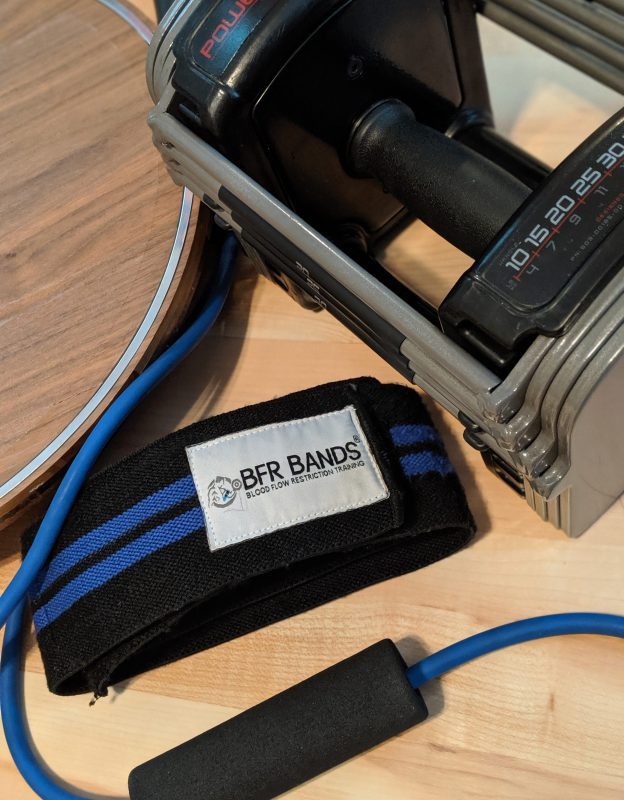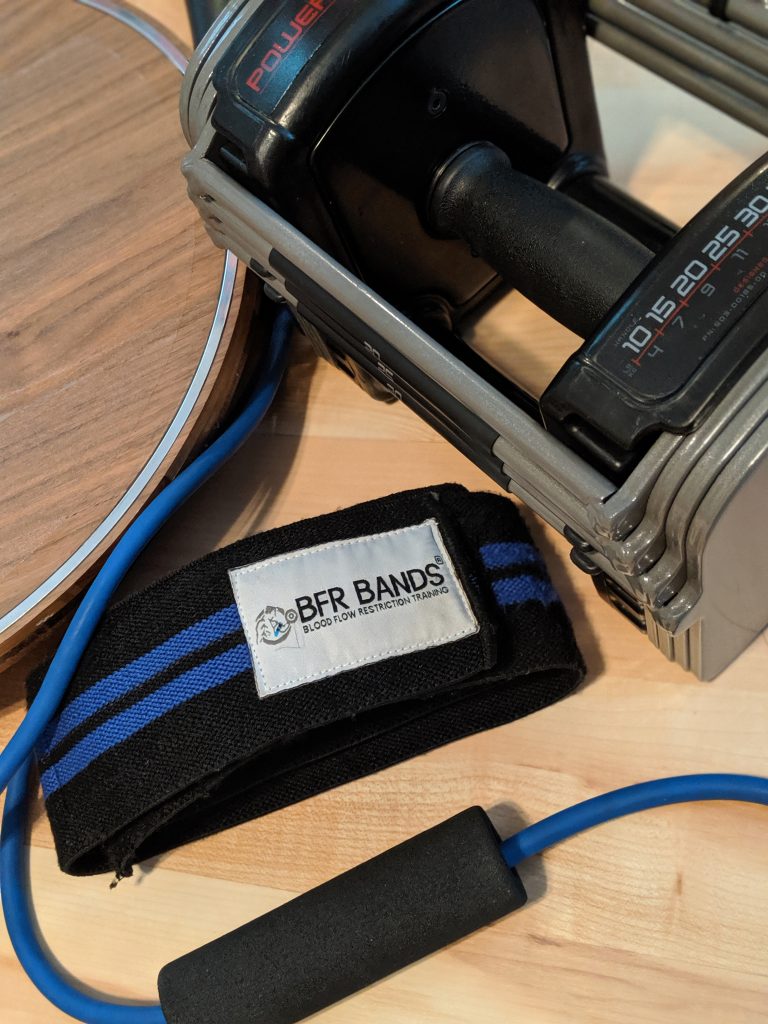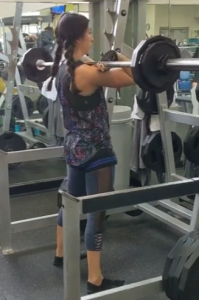
 If you are immersed in the world of fitness, chances are you have already heard of, or seen, or researched blood flow restriction (BFR) straps and training, also known as occlusion training. What on the outset may appear to be a fitness fad, there is plenty of solid research backing up the efficacy of this training methodology across a variety of approaches and outcomes to improve size and strength, endurance and speed. While it’s getting the limelight more today than ever, the concept was first studied in 1994 by Dr. Yoshiaki Sato in Japan.
If you are immersed in the world of fitness, chances are you have already heard of, or seen, or researched blood flow restriction (BFR) straps and training, also known as occlusion training. What on the outset may appear to be a fitness fad, there is plenty of solid research backing up the efficacy of this training methodology across a variety of approaches and outcomes to improve size and strength, endurance and speed. While it’s getting the limelight more today than ever, the concept was first studied in 1994 by Dr. Yoshiaki Sato in Japan.
What is BFR Training?
Although the exact mechanisms for creating muscle growth aren’t totally clear, most agree that mechanical loading coupled with metabolic stress are the primary drivers spurring hypertrophy. What exactly is metabolic stress? It is “a physiological process that occurs during exercise in response to low energy that leads to metabolite accumulation [lactate, phosphate inorganic (Pi) and ions of hydrogen (H+)] in muscle cells.”
Resistance training results in this metabolite accumulation, which then has a cascading response of hormone release, hypoxia (trapped blood), heat shock proteins (highly conserved “stress” proteins) and cell swelling (Conrado de Freitas et al, 2017). This cascade ultimately results in greater growth hormone release and Insulin-like Growth Factor (IGF-1), which have an anabolic effect on adults contributing to muscle adaptations and growth.
BFR as a strategy works by intensifying this metabolic stress effect. A strap, wrap, band or some other tightening device is placed around the working limbs in order to restrict the outgoing veinous blood supply but to allow the deeper, incoming arterial blood flow to continue unaffected. Mechanically, the result is more trapped blood and accumulation of metabolites in the active muscle tissue, which causes the cells to swell.
This, in conjunction with greater metabolic stress than training without the BFR, is thought to be responsible for greater strength gains and hypertrophy than load-matched traditional resistance training. In other words, put the straps on and pick up the same weight you’ve been lifting and your results will be more significant.
BFR can be successfully employed with endurance activities such as walking, but is most commonly used with resistance training. It has been researched in a myriad of exercise settings with impressive results.
BFR for Hypertrophy
It appears that Type II muscles are recruited in greater numbers when BFR methods are employed, most likely since the restriction causes increased muscular fatigue even with low relative loads. You know what that means. Type II fibers respond to metabolic stress by growing.
In studies where low-load BFR resistance training was compared to traditional high-load resistance training without BFR, the results indicate similar outcomes on measures of hypertrophy.
So what happens when the same loads are used with and without BFR?
A meta-analysis of 13 studies determined that hypertrophy was greater in the groups utilizing BFR than the groups that didn’t. What’s even more interesting is that using BFR with non-resistance training, such as walking, is effective for hypertrophy compared to that same activity without BFR.
This means traditional endurance activities can result in muscle growth when blood flow to the muscle groups doing the work is restricted.
Another study examined whether greater gains were seen with emphasis on the eccentric or concentric motion and found that the latter was actually more beneficial for muscle growth.
The implications of this are notable, especially when clients want to be challenged without heavy loads or suffer from chronic pain and cannot necessarily handle intense weights.
BFR for Strength
The benefits of BFR don’t stop at impressive hypertrophy results. Strength gains are also seen, though the results are not as consistent nor significant.
In studies comparing BFR with low loads to traditional resistance training without BFR using higher loads, the strength gains were the same or somewhat inferior. Similarly, when matched loads were compared, the BFR groups showed greater strength gains. Again, the BFR strategy can come in handy when strength gains are desired but handling heavier loads is contraindicated.
For the client who is injured, BFR can play an astounding role. Even without exercise, BFR appears to prevent loss of strength in patients with broken, casted ankles when compared to patients performing isometric contractions over a period of two weeks.
BFR for Endurance
A few studies looking at BFR resistance programs seem to indicate that BFR does improve muscular endurance outcomes but no better than conventional resistance programs. However, research studying non-resistance exercise using BFR does seem to improve muscular endurance when compared to non-resistance exercise without BFR.
Furthermore, a few studies indicate that BFR non-resistance training is better at improving muscular endurance than non-resistance training without BFR, but more research needs to be done in this area.
BFR for Speed
What happens when BFR resistance training programs are intended to improve sprinting speed? Turns out, at least one study compared a 3-week strength training program with BFR to the same program without it and found the BFR group improved their sprinting time more than the control group.
Want to get faster without even running more? Throw some wraps around your legs and work out!
BFR Use and Applications
By now I’m sure you are convinced that occlusion training is certainly worth trying. I bought myself a pair of BFR wraps about two months ago. They run about $30 bucks for a mid-grade pair that are woven strongly and equipped with heavy hook and loop closures in two places. You can get more expensive wraps that have numbers on them so that you can remember your correct “tightness setting.”
These particular wraps are intended to go around the upper thigh right below the gluteal fold. Always keep the straps away from the middle of the limb to avoid choking the arteries.
Wrap the bands around the thigh once and the first set of hook and loops will meet. Wrap around one more time and the second closures will meet, creating a snug, secure fit.
The instructions direct the wearer to tighten the bands enough to feel pressure but not too tightly to feel like circulation is completely cut off. Some researchers found that lifters had a hard time pinpointing this sweet spot, so they devised a scale. Aiming for a degree of tightness that equates to a 7 on a scale of 1 to 10 for legs and only a 5 for arms will keep you in the correct range to prevent arterial occlusion. It may help to experiment with different degrees of tightness first to make that number assignment possible
Smaller wraps are available to wear at the top of your arms below the shoulder, but there’s no rule saying you have to make a special purchase. I used hair bands around my arms because they fit and I wanted to find out if they could work appropriately. (They were ‘meh’). But you could probably even use boxing wraps,
The BFR strategy should not be employed in one area for longer than 10 minutes at a time.

Select a weight that is only 20-50% of your 1RM for the exercise you want to perform. I personally have been using them solely for squats and worked in the 12 rep range for four sets. But the same researchers who devised the tightness scale mentioned above suggest four sets with reps of 30, 15, 15, and 15, with only 30 seconds rest between sets, 2-3 times per week.
For someone like me who has chronic low back pain but a desire to lift heavy and grow bigger muscles, the BFR strategy is promising and exciting.
If you have clients who shy away from heavy lifting, you may want to try this approach with them or any other client who is intrigued by it.
Another great use is to bring up one limb that may be smaller or weaker than another, perhaps from a previous injury or sports overuse.
It’s always good policy to dip your toe in the water before throwing someone else in, so if you haven’t given occlusion training a try yet as a trainer, what’s stopping you?
References
www.strengthandconditioningresearch.com/blood-flow-restriction-training-bfr/#3
Loenneke, J. P., Fahs, C. A., Rossow, L. M., Abe, T. & Bemben, M. G. (2012b). The anabolic benefits of venous blood flow restriction training may be induced by muscle cell swelling. Medical Hypotheses, 78, 151-4.
www.bodybuilding.com/content/ask-the-muscle-prof-whats-the-deal-with-occlusion-training.html







